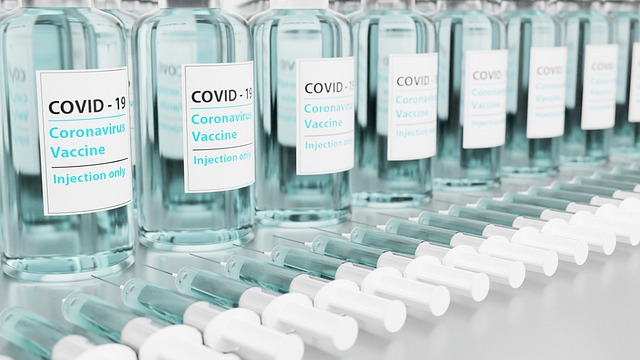The coronavirus disease 2019 (COVID-19) pandemic represents one of the greatest public health challenges in recent years. Identifying risk factors for poor prognosis of COVID-19 is a key task to minimize morbidity and mortality attributable to the disease.
Various metabolic abnormalities have been reported in patients with confirmed COVID-19, often related to disease severity, raising the hypothesis of a putative role in the pathogenesis of severe acute respiratory syndrome coronavirus 2 (SARSCoV-2). Consequently, diabetes patients with COVID-19, especially when obesity is associated, are widely reported to be at increased risk of dying or requiring intensive care.
In general, chronic hyperglycemia is an independent predictor of poor prognosis in lower respiratory tract infections, especially when established micro- and macrovascular complications have already occurred. Available evidence demonstrates that diabetes is a key risk factor for infectious diseases and that people with diabetes are at increased risk of infection-related mortality.
Apart from the lack of glucose control and coexisting complications of diabetes, which necessarily contribute to the inherent disease predisposition of patients with diabetes, concomitant insulin resistance may accompany severe forms of COVID-19 because Insulin resistance is closely related to systemic inflammation, prothrombotic state, vascular dysfunction and altered immune response. Together, these pathophysiological abnormalities potentially contribute to the state of metabolic overinflammation reported in patients with more severe course of COVID-19.
Although knowledge about insulin resistance could be useful to improve risk assessment of a complicated disease course in patients with severe COVID-19, its direct measurement is not easy to perform in clinical practice or, especially, in the hospital environment. In addition to being overweight, a common characteristic strongly related to insulin and the so-called atherogenic dyslipidemia, that is, the co-occurrence of hypertriglyceridemia, low HDL and small, dense LDL particles.
Aim
Identifying metabolic factors associated with critical illness may help improve the management of patients hospitalized with coronavirus disease 2019 (COVID-19). High triglycerides and low HDL levels characterize atherogenic dyslipidemia closely related to insulin resistance and diabetes.
We examined associations of atherogenic dyslipidemia detected at admission with COVID-19 outcome during hospitalization.
Methodology
We retrospectively analyzed the clinical reports of 118 consecutive patients hospitalized for COVID-19 in Rome, Italy, between March and May 2020. Clinical characteristics, inflammatory markers, and glucose and lipid metabolism parameters were collected on admission.
Critical illness was defined as in-hospital death or the need for endotracheal intubation. Associations were tested using logistic regression analysis.
Results
Patients with critical COVID-19 (n = 43) were significantly older than those with non-critical disease (n = 75) and had higher levels of fasting glucose , triglycerides , C-reactive protein, interleukin-6, procalcitonin, and d-dimer. (P < 0.01 for all), while HDL levels were lower (P = 0.003).
Atherogenic dyslipidemia was more frequent in patients with critical COVID-19 (46 vs. 24%, P = 0.011), as well as diabetes (37 vs. 19%, P = 0.026), and was significantly associated with death or intubation (odds. ratio 2.53 [95% CI: 1.16–6.32], p = 0.018).
Triglycerides were significantly associated with selected inflammatory biomarkers (P < 0.05 for all) and worse COVID-19 outcome during hospitalization in both the general population and the atherogenic dyslipidemia subgroup .
Discussion
In the current study, we report a significant association between detection of atherogenic dyslipidemia on admission and subsequent adverse disease outcome in patients hospitalized for COVID-19. More specifically, atherogenic dyslipidemia was strongly associated with mortality , resulting in more than three times the odds of association with in-hospital death (OR 3.63 [95% CI 1.24–5.77]; P = 0.009) .
The levels of triglycerides detected on admission were also positively associated with the levels of CRP, procalcitonin and D-dimer, which in turn were higher in patients with critical COVID-19.
The presence of high levels of triglycerides is common in type 2 diabetes and is closely related to insulin resistance.
It has now been established that patients with pre-existing diabetes, especially if associated with obesity and other related comorbidities, are at high risk of death or prolonged and complicated hospitalization due to COVID-19, as reported by several large retrospective studies from different areas. geographical. In our smaller population, we confirmed the presence of diabetes as the main driver of disease severity, with an overall prevalence of almost 25%, which is not different from the age-standardized prevalence of diabetes reported in Italy.
Interestingly, fasting glucose on admission (mmol/L), but not HbA1c levels , was found to be related to in-hospital death or intubation due to respiratory distress (OR 1.11 [95% CI 1.02-1.43 ], P = 0.026). Such an association could be bidirectional. Indeed, hyperglycemia itself can directly affect host defenses , including granulocyte and macrophage function, and amplify the hyperimmune response associated with severe COVID-19.
Alternatively, increased blood glucose could be the result of metabolic stress determined by a more severe infection. In contrast, HbA1c levels were not different between patients with worse or better outcomes, while the prevalence of diabetes among patients was significantly higher for groups with worse prognosis (37 vs. 19%, P = 0.026). These findings are not easy to interpret.
According to hospital medical records, no substantial differences emerged between diabetes patients with critical and non-critical COVID-19 in terms of age, sex, and antihyperglycemic treatment prior to admission. Notably, routine insulin therapy before admission, which has been associated with mortality in another cohort hospitalized for COVID-19, was not different between groups in our population. Unfortunately, information on microvascular complications, which would have been useful to better define the severity of diabetes, was not available.
In conclusion , our study provides evidence for the first time that atherogenic dyslipidemia detected on admission, and in particular hypertriglyceridemia, may be another independent metabolic abnormality associated with adverse prognosis in patients hospitalized with COVID-19, which deserves further investigation in populations. bigger . Therefore, evaluation of the lipid profile, along with other already established risk factors, should be encouraged in patients with severe COVID-19.
Final messages
|
















